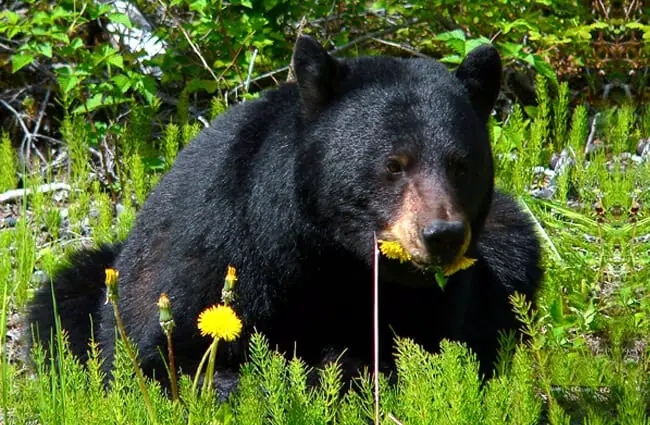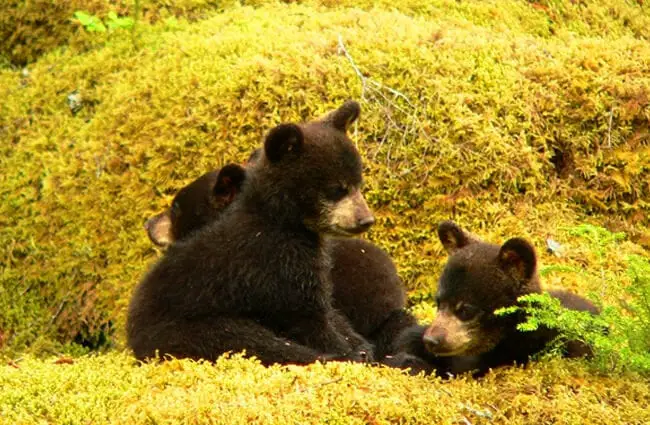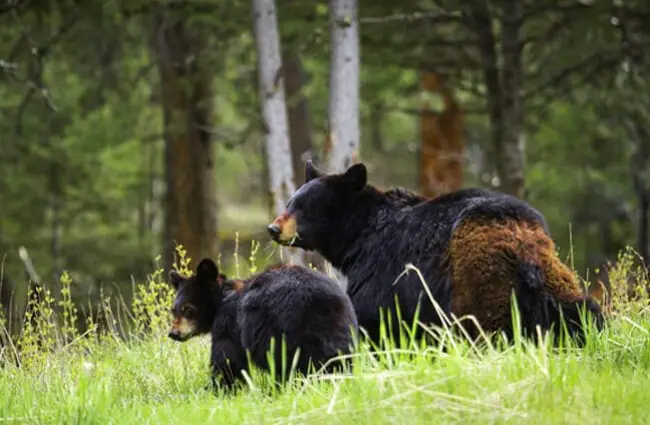The American black bear, Ursus americanus, is a familiar yet often misunderstood inhabitant of North American forests. More adaptable than many realize, this resourceful creature plays a vital role in the ecosystems it calls home. This guide delves into the fascinating world of the black bear, exploring its history, behavior, ecological significance, and interactions with humans.

A History Rooted in Evolution
The story of the black bear begins millions of years ago with its ancestors, part of the broader bear family Ursidae, which originated in Asia. Fossil evidence suggests bears gradually migrated to North America via the Bering Land Bridge. Over time, these ancestral bears diversified, eventually leading to the modern black bear. Black bears diverged from other bear species earlier in the bear lineage, but have evolved adaptations that allow them to thrive in a wide range of habitats. Their evolutionary success lies in their generalist diet and ability to thrive in both forested and more open environments.
Habitat and Distribution
The black bear boasts the widest distribution of any North American bear species. Found in 48 contiguous states, as well as parts of Canada and Mexico, they occupy a remarkable range of habitats. These include dense forests, mountains, swamps, and even suburban areas. They prefer areas with thick understory for cover and a plentiful supply of nuts, berries, and other food sources. Historically, their range was limited by glacial activity, but as the climate warmed, they expanded their territory. Today, black bear populations are generally stable, but fragmentation of habitat due to human development remains a concern.
Diet and Foraging Behavior
Often described as opportunistic omnivores, black bears have an incredibly diverse diet. Approximately 80% of their diet consists of vegetation, including berries, nuts, roots, and grasses. They are particularly fond of acorns and other hard mast, which they consume in large quantities to build up fat reserves for winter. The remaining 20% includes insects, fish, small mammals, and occasionally carrion. Their powerful claws are well suited for digging up roots and grubs, while their teeth are adapted for crushing and grinding plant matter. Bears exhibit seasonal foraging patterns, shifting their diet based on food availability. In the spring, they focus on new growth and invertebrates, while in the fall, they gorge on calorie‑rich foods to prepare for hibernation.

Life Cycle: Reproduction and Development
Black bears typically reach sexual maturity between the ages of 3 and 6 years. They are generally solitary animals, except during the breeding season, which occurs in the spring and early summer. Males will actively seek out females, sometimes engaging in fierce competition for mating rights. After a gestation period of about 220 days, females give birth to litters of one to six cubs, usually in a den that is a natural cavity or hollow, under a fallen log, or in a secluded area on the ground. Cubs are born blind and helpless, relying entirely on their mother for care. They remain with their mother for approximately 18 to 24 months, learning essential survival skills. During this time, they are closely guarded and protected from predators. The mortality rate for cubs is relatively high, with many not surviving their first year.
Ecological Role and Inter Species Interactions
Black bears play a crucial role in maintaining the health of their ecosystems. As they forage, they disperse seeds, contributing to plant regeneration. Their digging activities aerate the soil and create habitat for other animals. By consuming fruits and berries, they help control plant populations. They also contribute to nutrient cycling through their waste. Black bears sometimes interact with other animals, sometimes competitively. They can displace smaller predators from kills or raid nests for eggs. Occasionally, they may prey on deer fawns or livestock. However, they generally avoid direct confrontations with large predators like wolves or mountain lions.

Human-Bear Interactions
As human populations expand into bear habitat, encounters between the two species become more frequent. While black bears are generally shy and avoid humans, they can become habituated to human presence if they repeatedly have access to human food. This can lead to conflicts, as bears may raid garbage cans, campsites, or even enter homes in search of food. It is crucial to practice responsible bear safety by storing food properly, securing garbage cans, and avoiding approaching bears in the wild. In areas with high bear populations, wildlife agencies may implement bear management programs, such as relocation or, in rare cases, lethal removal, to address conflicts.
Hibernation and Winter Survival
Black bears are not true hibernators like some other bear species. Instead, they enter a state of dormancy known as torpor. During torpor, their heart rate and body temperature decrease significantly, but they can be aroused relatively easily. Bears prepare for winter by consuming large amounts of food in the fall to build up fat reserves. They then seek out a den, which they may line with leaves and grasses for insulation. During winter, they rely on these fat reserves to sustain themselves. They do not eat, drink, urinate, or defecate during this period. They may occasionally emerge from their dens during mild weather, but generally remain inactive until spring.

For Hikers: Encountering a Bear in the Wild
If you encounter a black bear while hiking, remain calm. Do not run. Make yourself look large by raising your arms and making noise. Speak in a firm voice. Slowly back away, maintaining eye contact with the bear. If the bear approaches, stand your ground. Use bear spray if you have it. Report the encounter to local wildlife authorities.
For Zookeepers: Caring for Black Bears in Captivity
Providing appropriate enrichment is crucial for the well-being of captive black bears. This includes providing a variety of natural substrates, climbing structures, and opportunities for foraging. A diet should be formulated to meet their nutritional needs and mimic their natural diet. Regular veterinary check‑ups are essential to monitor their health. Avoid overfeeding, as obesity can lead to health problems. Provide ample space for them to roam and exhibit natural behaviors.
Black Bear Subspecies and Variations
While generally considered a single species, black bears exhibit considerable variation in size and color. There are 16 recognized subspecies, each adapted to its specific environment. Colors range from black to brown, cinnamon, and even blonde. The Gulf Coast bear, for example, is a darker subspecies found in coastal regions of the southeastern United States. These variations are due to genetic differences and environmental factors.

Interesting Facts
Black bears have an excellent sense of smell, which they use to locate food from miles away. They can climb trees with ease, and often seek refuge in trees to escape predators or find food. Their paws are equipped with non-retractable claws, which are used for digging, climbing, and defense. They can run at speeds of up to 35 miles per hour. Black bears are known for their intelligence and problem‑solving abilities. They can learn to open doors, raid coolers, and even manipulate objects to obtain food.
The American black bear is a remarkable creature, a testament to the power of adaptation and resilience. Understanding its biology, behavior, and ecological role is crucial for ensuring its continued survival in a rapidly changing world. By respecting its habitat and practicing responsible coexistence, we can ensure that future generations will continue to marvel at this magnificent animal.

![Red Angus Closeup of a beautiful Red Angus cowPhoto by: U.S. Department of Agriculture [pubic domain]https://creativecommons.org/licenses/by/2.0/](https://animals.net/wp-content/uploads/2020/03/Red-Angus-4-238x178.jpg)




![Red Angus Closeup of a beautiful Red Angus cowPhoto by: U.S. Department of Agriculture [pubic domain]https://creativecommons.org/licenses/by/2.0/](https://animals.net/wp-content/uploads/2020/03/Red-Angus-4-100x75.jpg)

